Scoring the City
A sensory inquiry into space, place, and practice
I'm undertaking a series of walks to better understand strategies for observing, collecting, and recording multi-sensory information around us. This research draws from psychogeography, placemaking, and embodied methodologies, seeking to understand the nuances of place through movement, stillness, and shared experiences. I explore how constraint, collaboration, and attention shape our relationship with place.
Listening to Purple Pipes
22.09.23 | Canary Wharf | Katherine Smith & Priti Pandurangan
In a collaborative exercise, Katherine & I set out on a unique performatory walk, guided by purple pipes that served as an interface (Smith, K., Listening to Purple Pipes at Canary Wharf Station, 2023) to our surroundings. These pipes, part constraint and part compass, shaped the physical and relational dynamics of our walk.
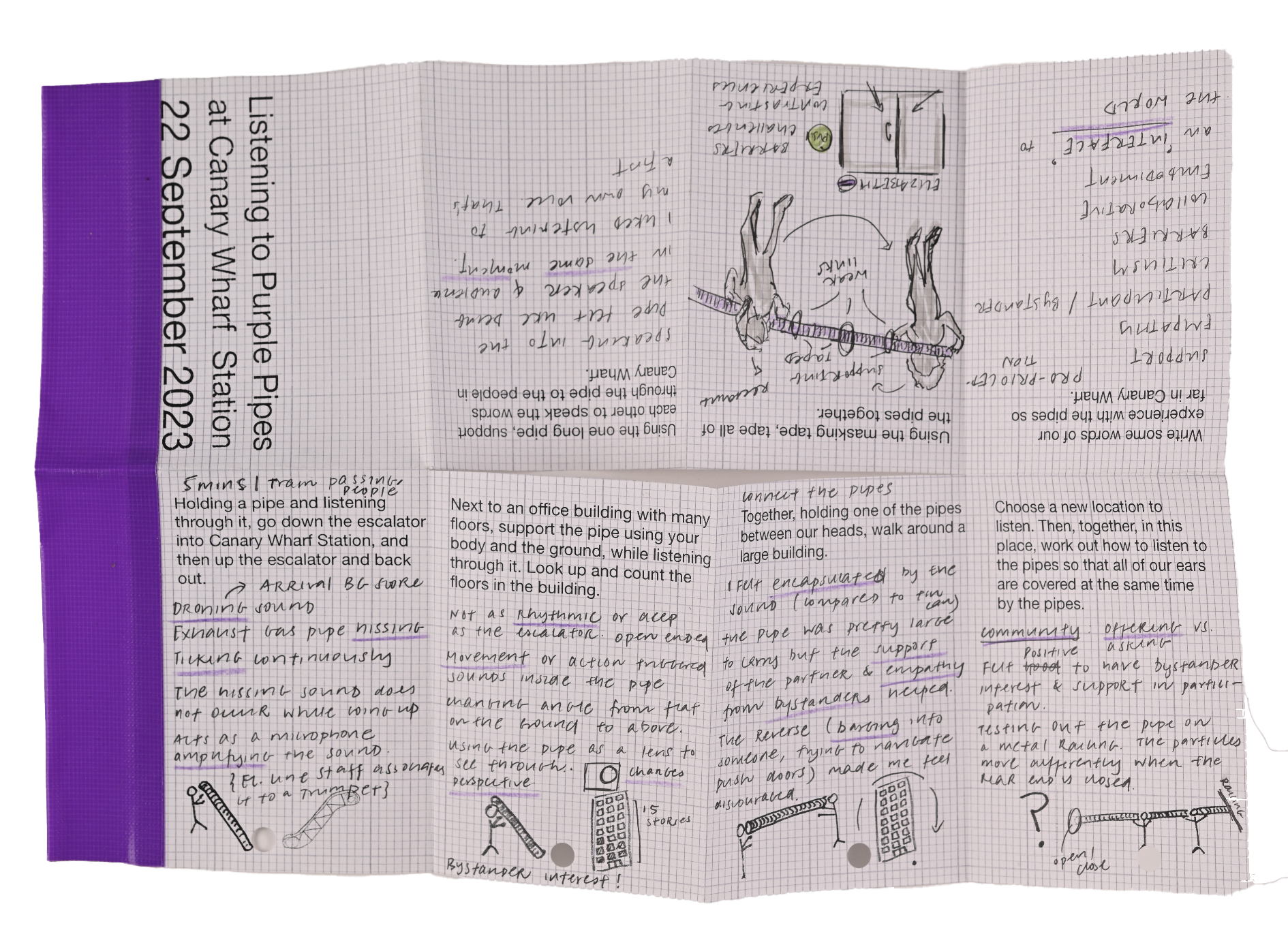
The pipes served as the scaffolding on which our sensory experience was built. As we ventured into the city with these pipes, I immediately realised the power of using such seemingly inconvenient objects as constraints. They were no longer mere props; they turned our walk into an act of negotiation: with each other, with our environment, and with time.
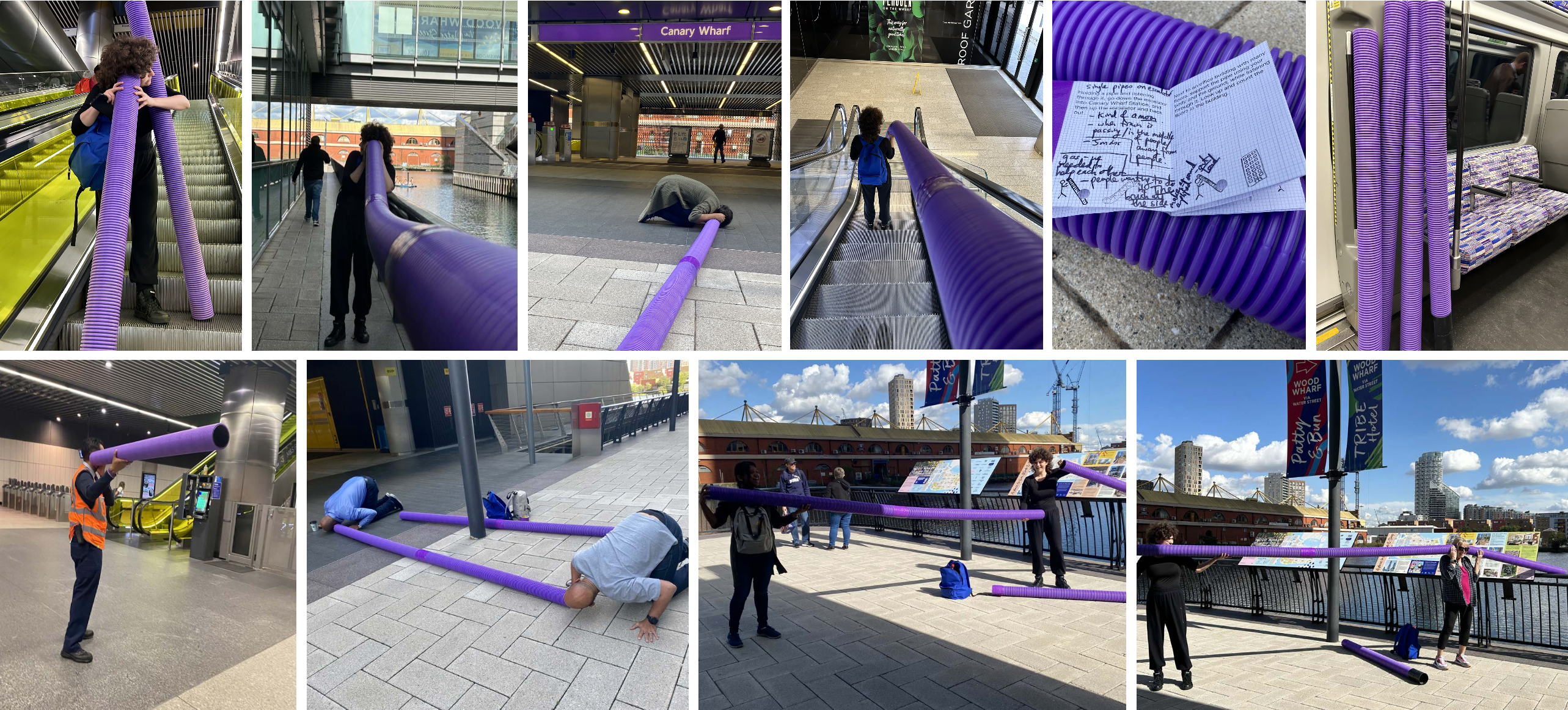
This demanded a deliberate act of deceleration in a busy business district. Our interactions — between ourselves, the pipes, and the public — surfaced a spectrum of social responses: curiosity, kindness, frustration, indifference. Collaboration was an essential aspect of the walk. As we navigated through the space together, we maintained a pace synchronised by our shared connection to the purple pipes. We were mindful of each other’s needs and preferences, offering support (Smith, K., Listening to Purple Pipes at Canary Wharf Station, 2023) and encouragement when the environment or our own limitations presented challenges. The sum of our efforts was greater than the individual parts. (Smith, K., Listening to Purple Pipes at Canary Wharf Station, 2023).
This walk enriched my understanding of collaboration and heightened my awareness of others’ sensibilities. This proved to be a remarkable and fascinating experience, touching upon collaboration, proprioception, and the role of constraint in shaping place-based encounters.
Mapping as an Act of Witnessing
20.09.23 | Montreal Place | Organised by Applied Works
In a workshop on visualising data about London organised by Applied Works, I evaluated some of my score-based strategies for systematically observing, documenting, and mapping intangible sensory information.
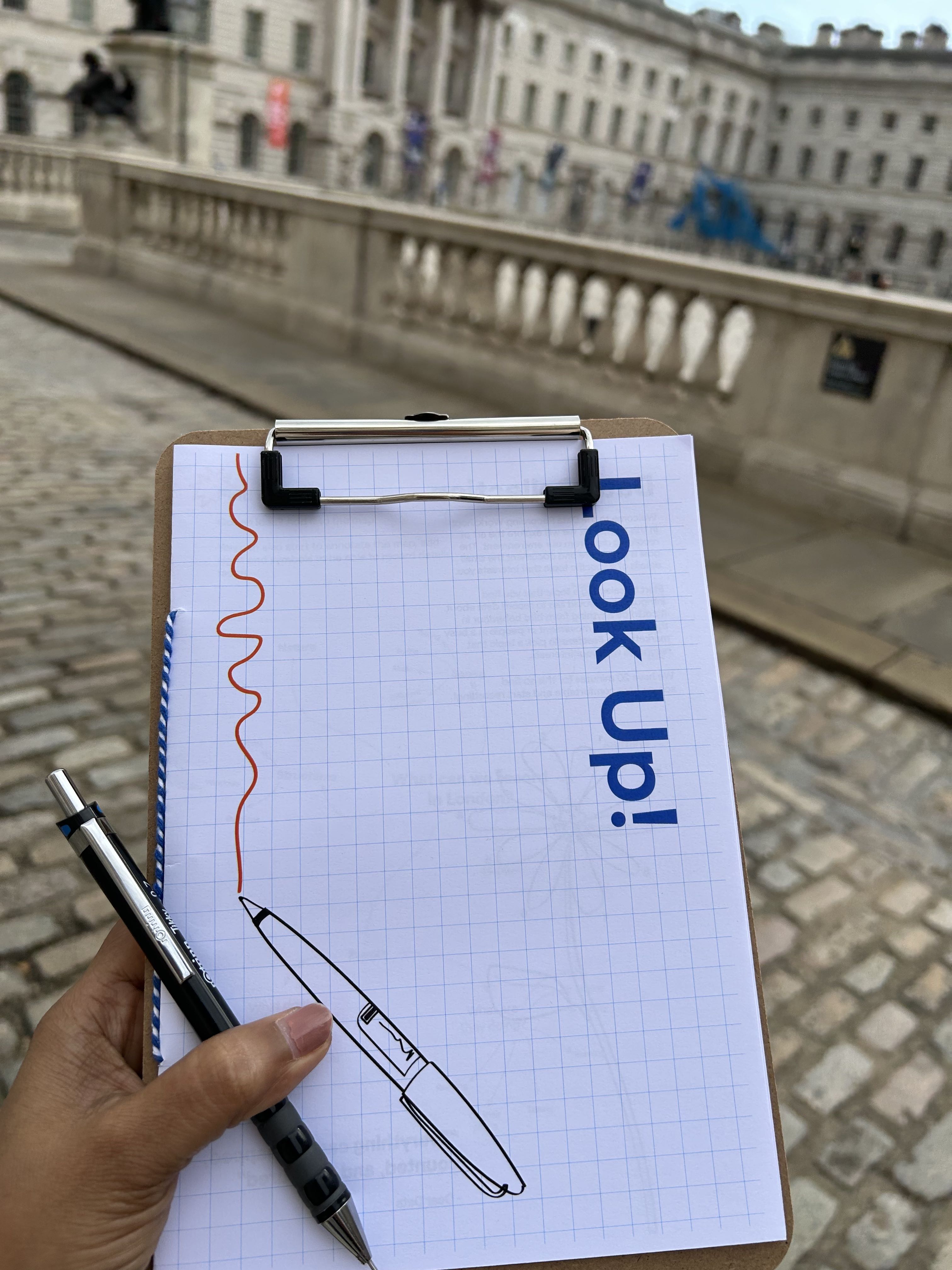
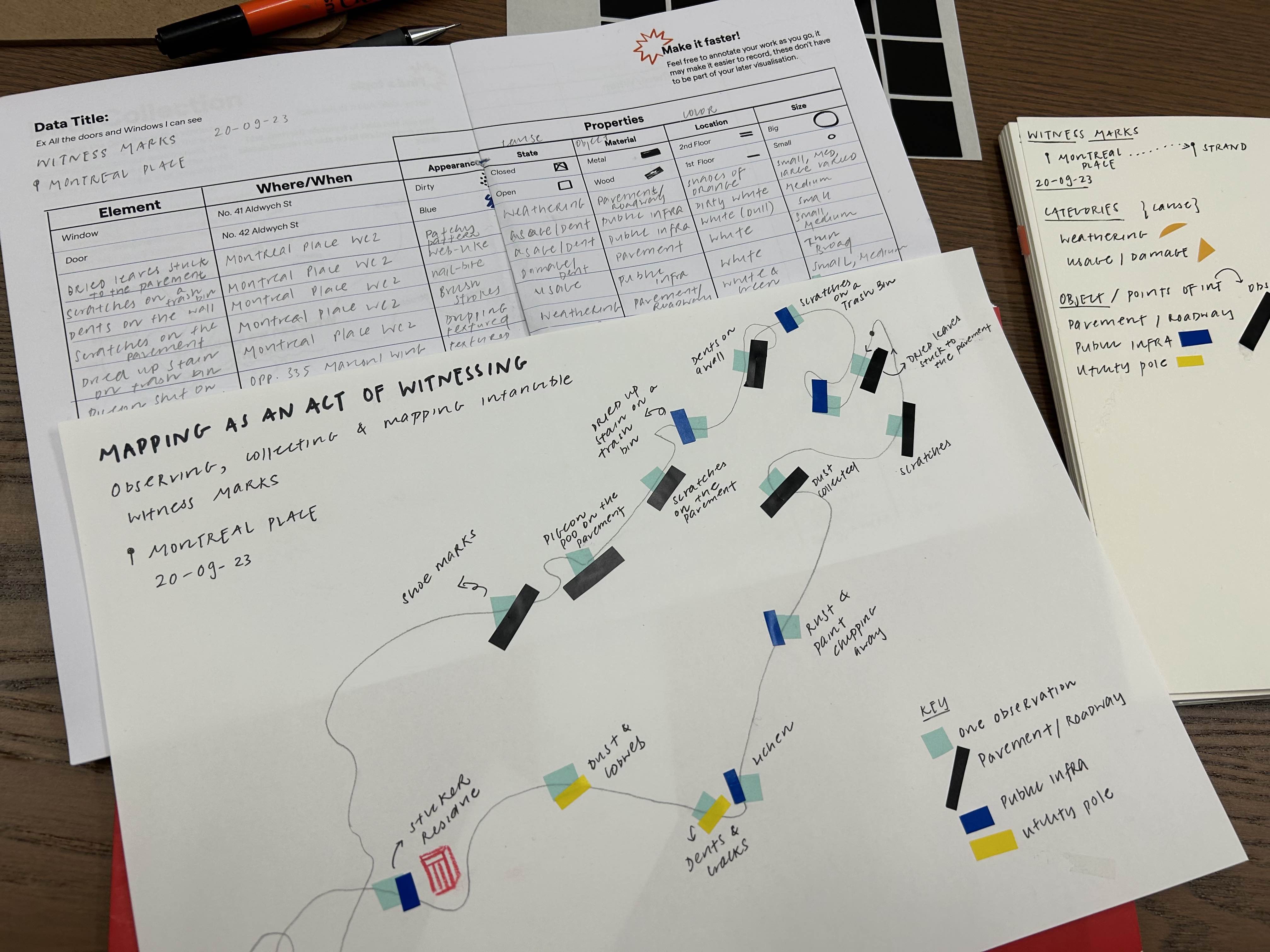
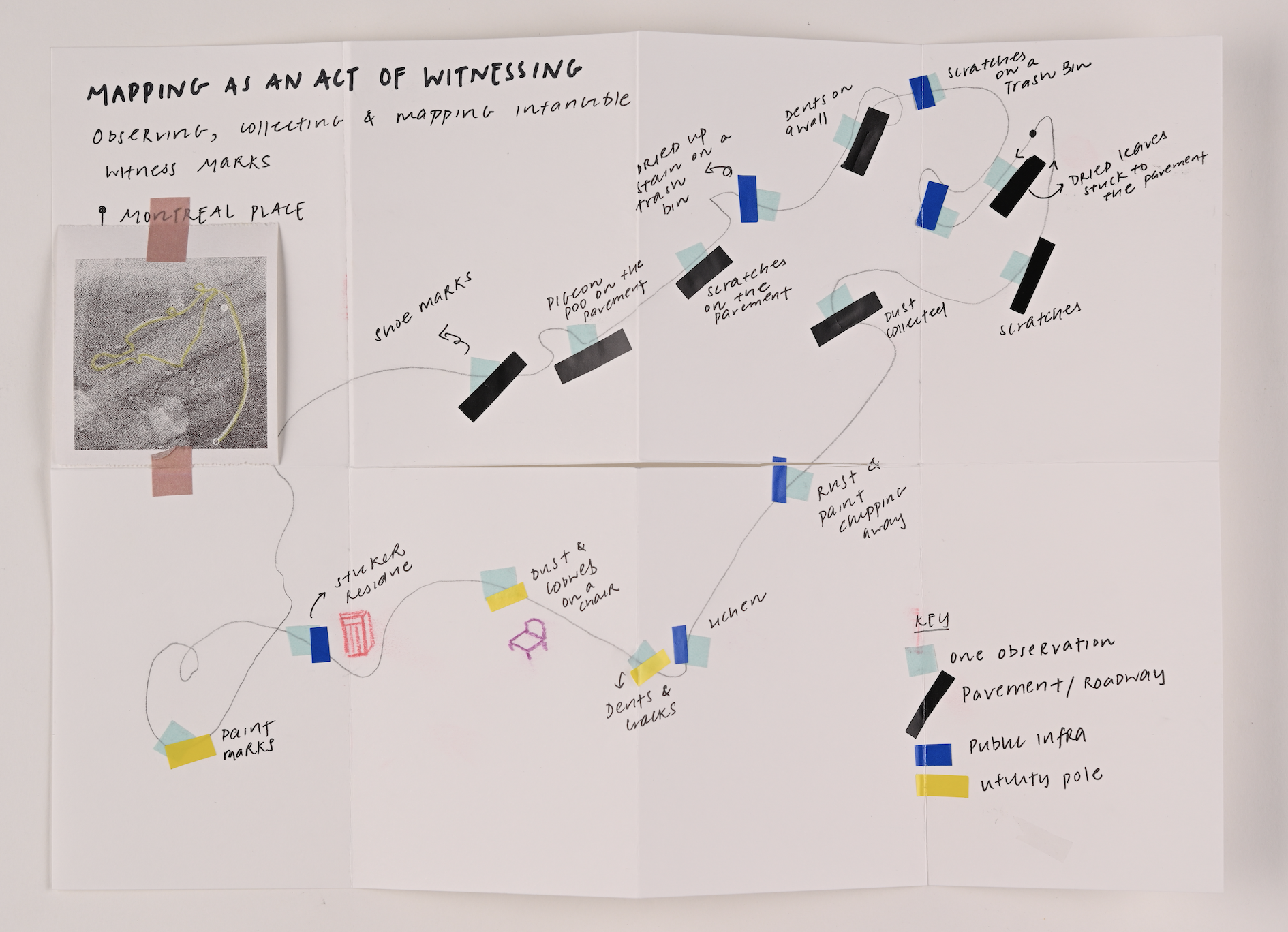
Stratford Surround Sounds
10.09.23 | Stratford | Organised by Fieldnotes

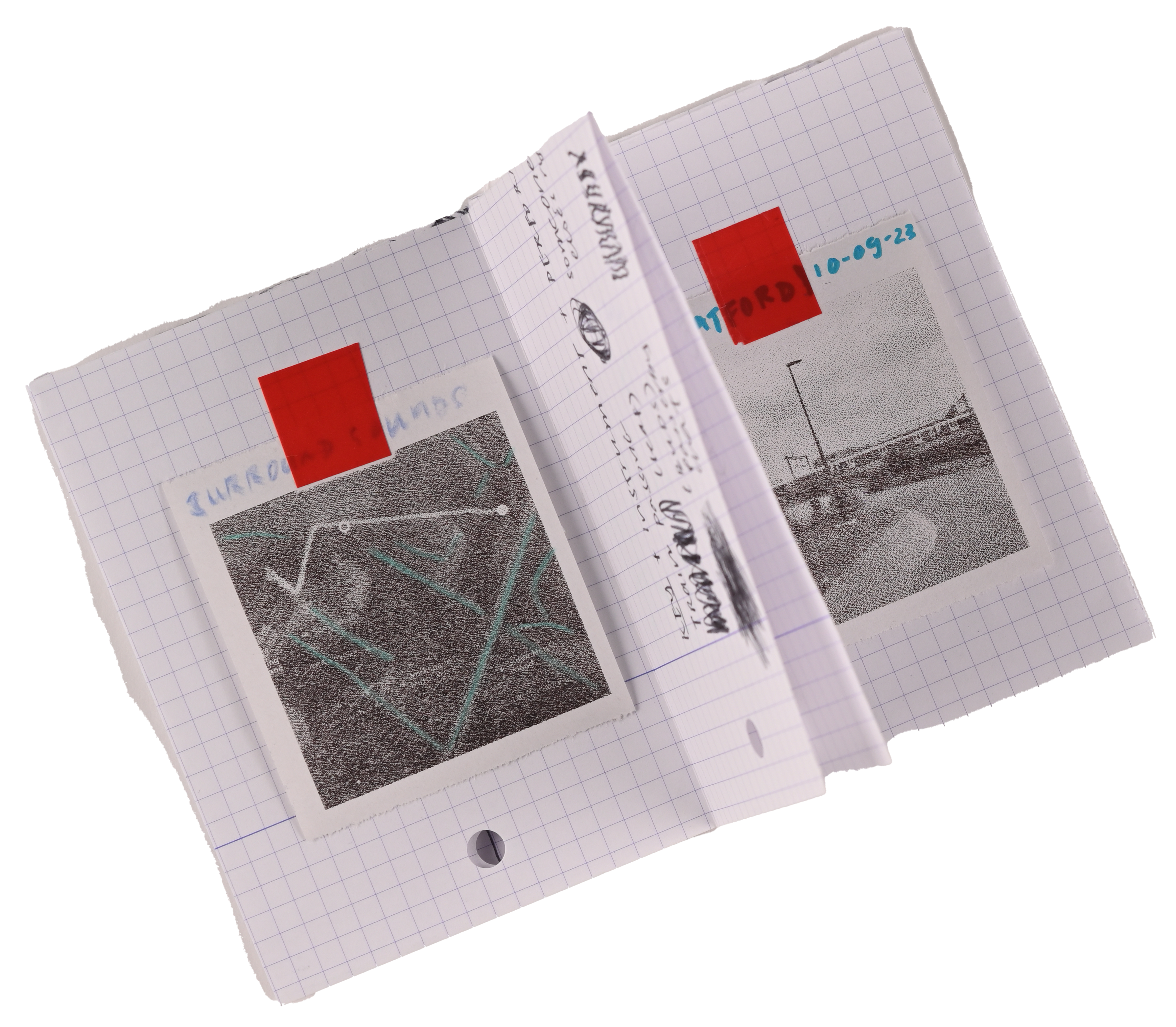
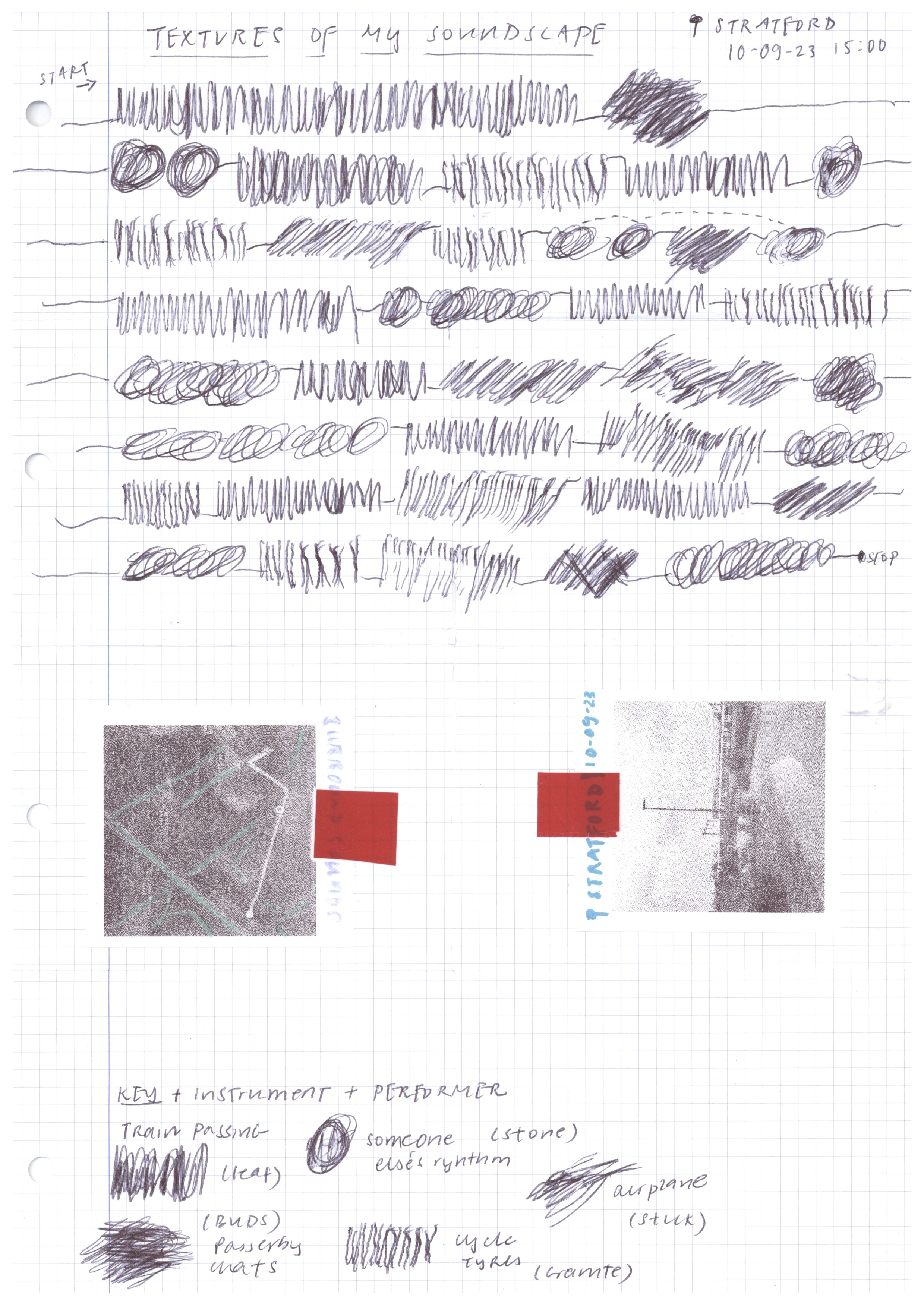
Mill Harbour Sound Walk
20.08.23 | Mill Harbour

Language of the Senses
12.07.23 | Tower Bridge | Priti Pandurangan
I highlight a key experiment here that drew upon insights gathered from my previous experiences and culminated as a presentation at a work-in-progress show in July 2023 at the London College of Communication.

Borrowing from Georges Perec’s notion of exhausting a place (2010), I tested a data collection score focused on prolonged observation and meticulous recording of sensory encounters while remaining stationary. I deliberately chose to isolate different sensory channels and document their aspects such as intensity, reach, temporality, intermingling, and associations.
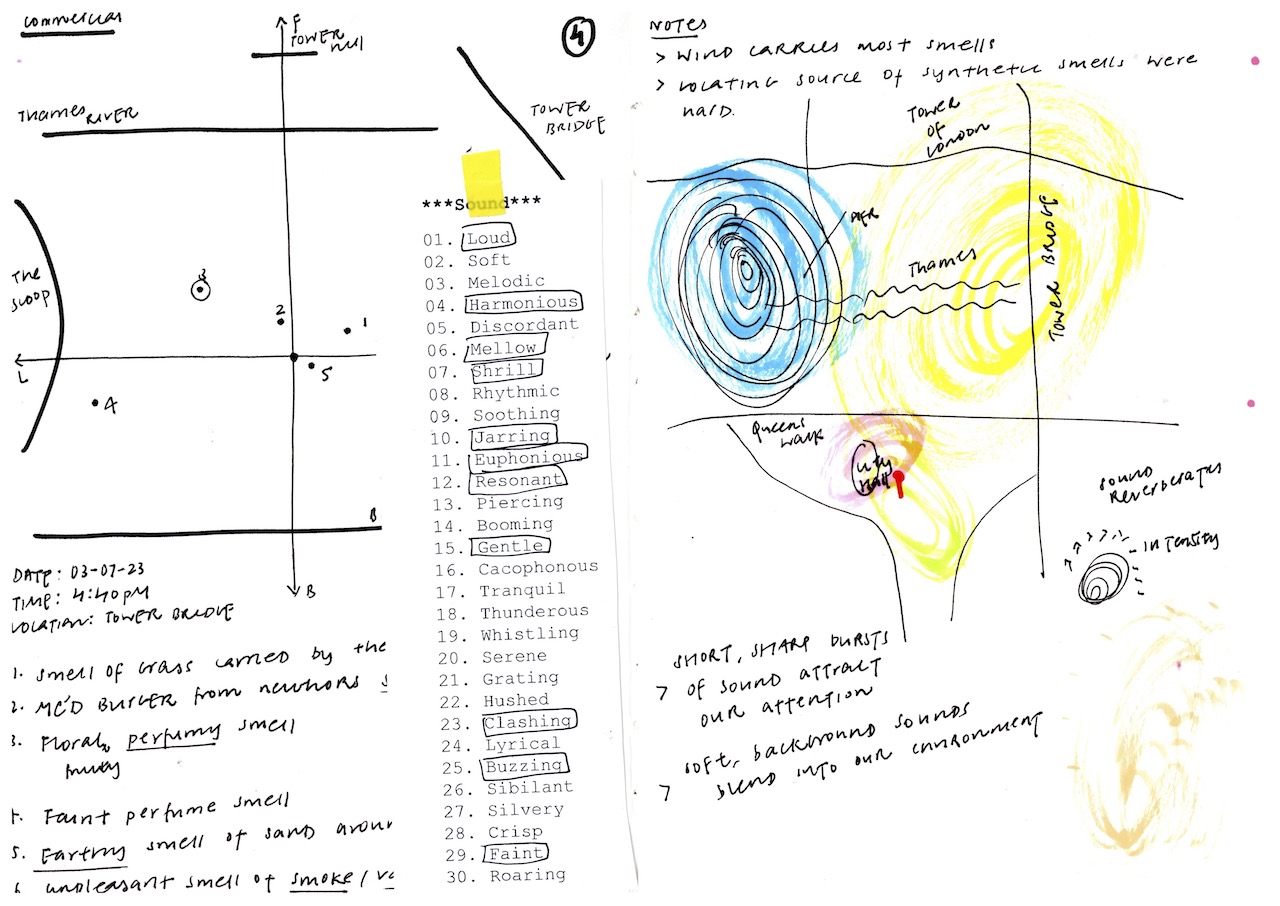
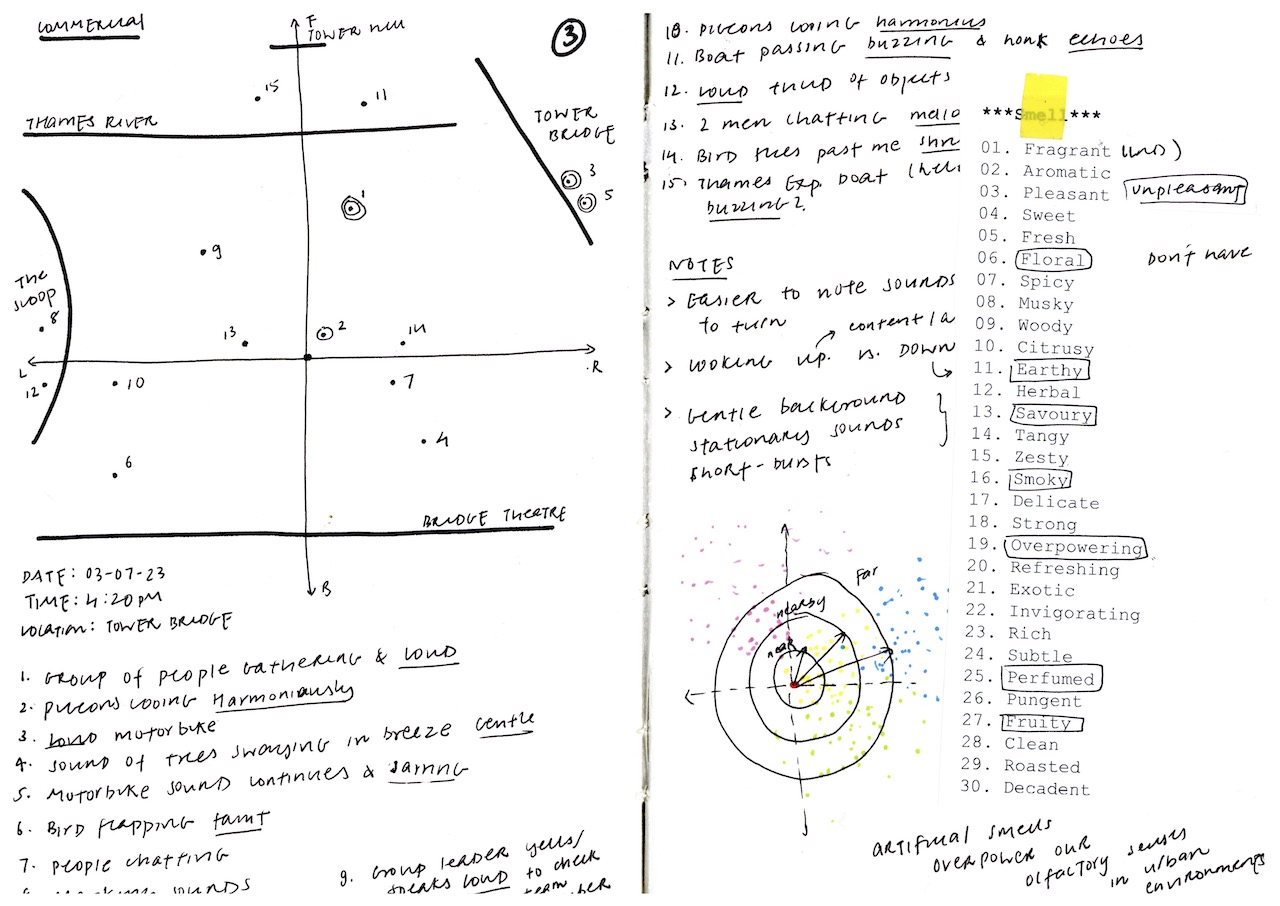
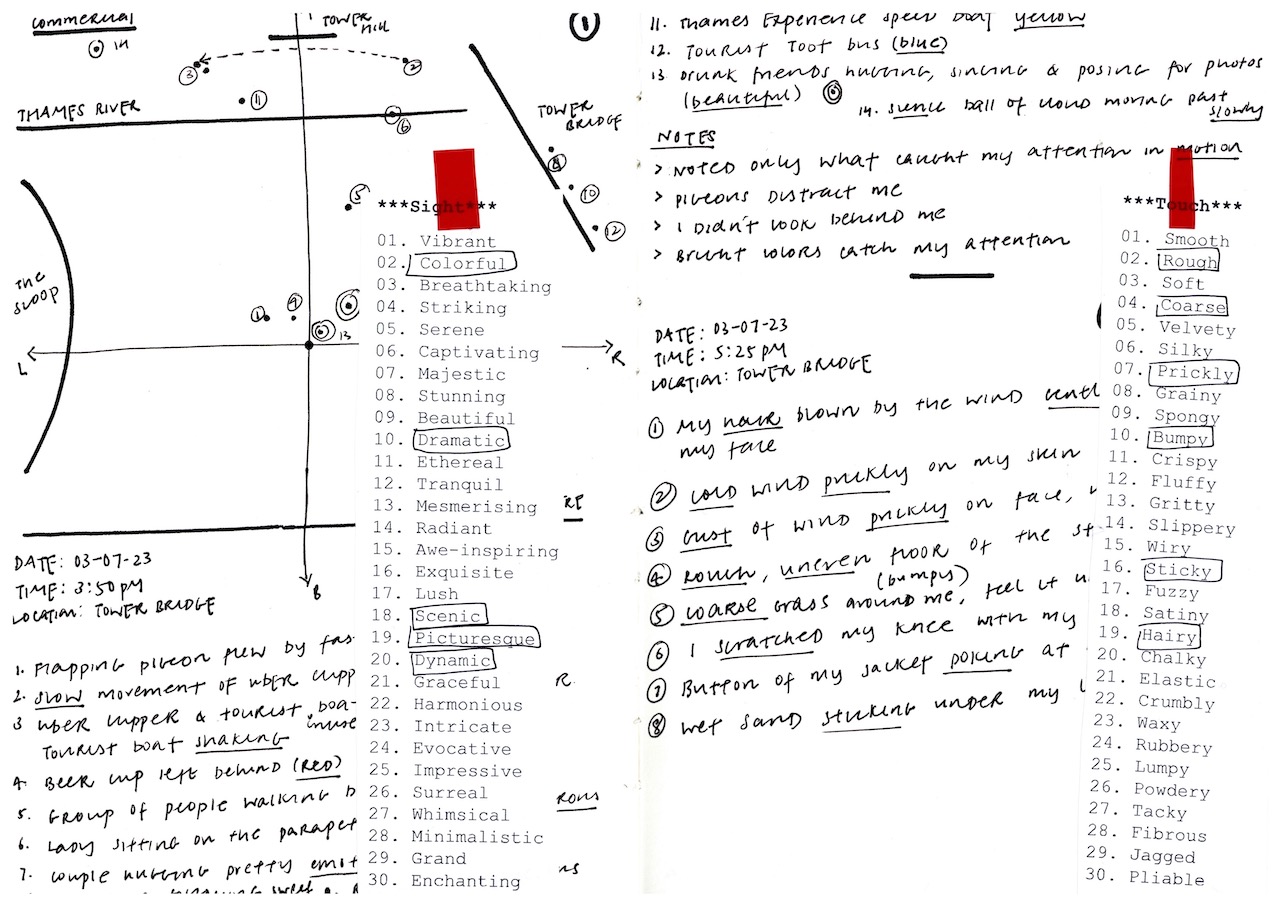
Key findings emerged from this exercise:
- Sensory information carries variably across distances, with sight and sounds having a broader reach compared to the limited range of smell and tactile sensations.
- Certain aspects drew my attention, like vibrant hues or abrupt, loud sounds, whereas it required conscious effort to notice the quieter background noises and subtle scents.
- Environmental conditions can influence the perception of certain senses, such as how the direction of the wind can impact the strength of transported odors.
- Some senses are more likely to be intermingled than others. Sounds, in particular, often overlap and can be associated with movements in the environment.
- The information gathered through these exercises was visualised as a series of Risograph prints for the exhibition. The audience’s response was predominantly favorable, sparking conversations about the potential expansion of this framework into a participatory setting.
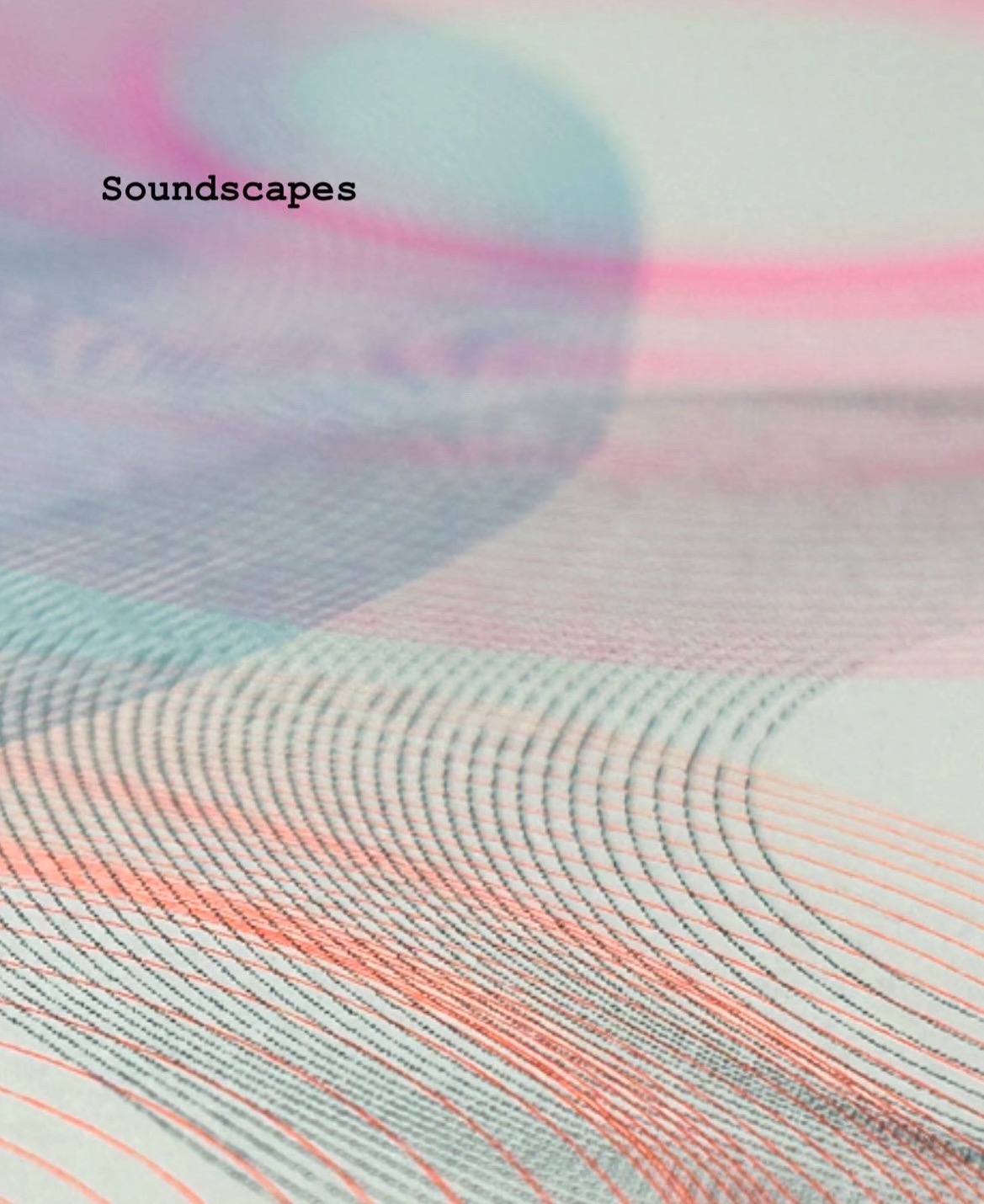
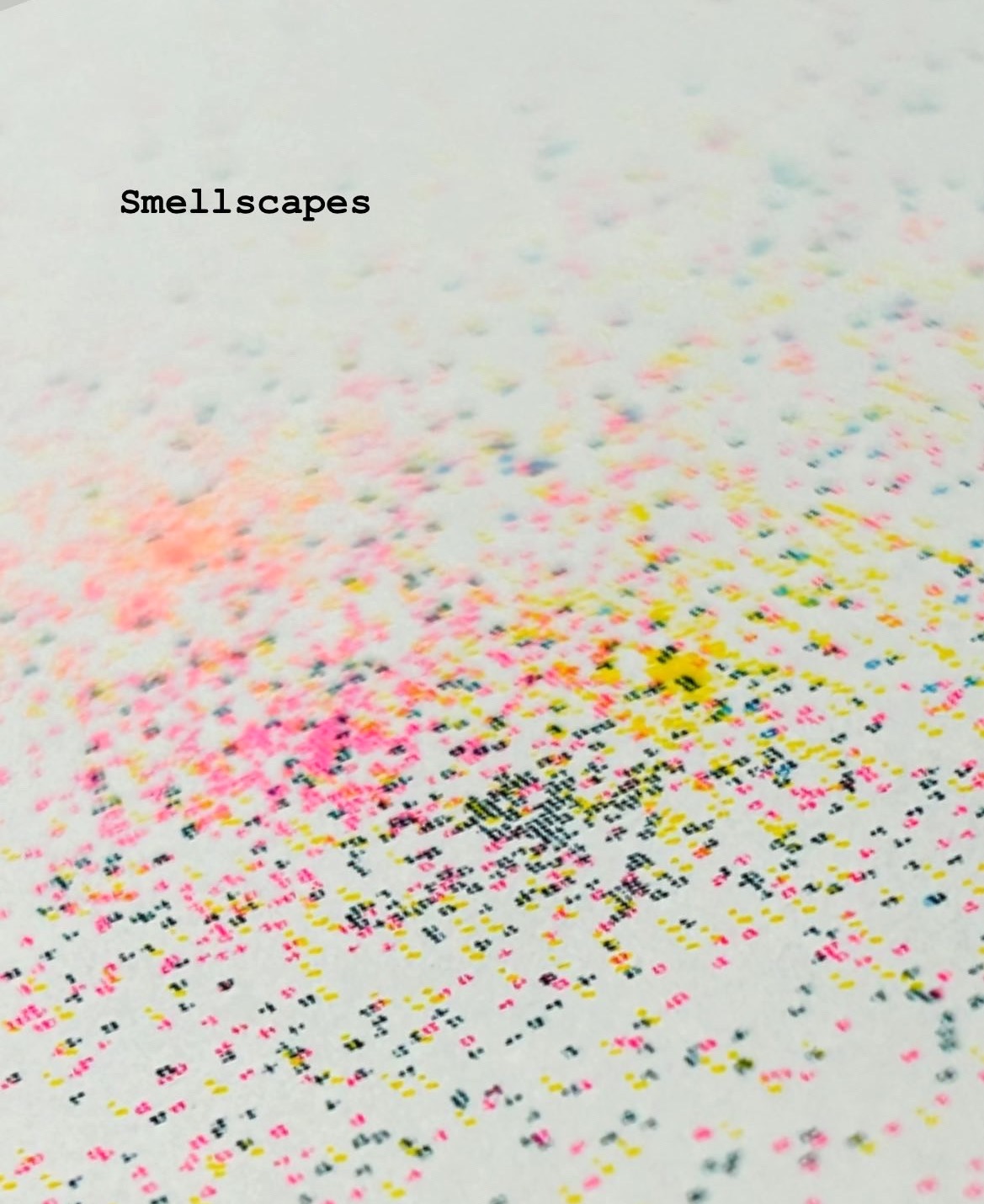
Choreographing the City
26.06.2023 | Clerkenwell Close
I undertook a series of walks with Theatrum Mundi, a centre for research and experimentation in the public culture of cities (Theatrum Mundi, no date). These were centered around urban choreographies and psychogeographical scores utilising movement and mapping strategies. Focusing on embodied experiences, we engaged in tactile exploration and physical movement to uncover and pursue the surfaces, paths, imprints, traces, and desires we encounter within cities.
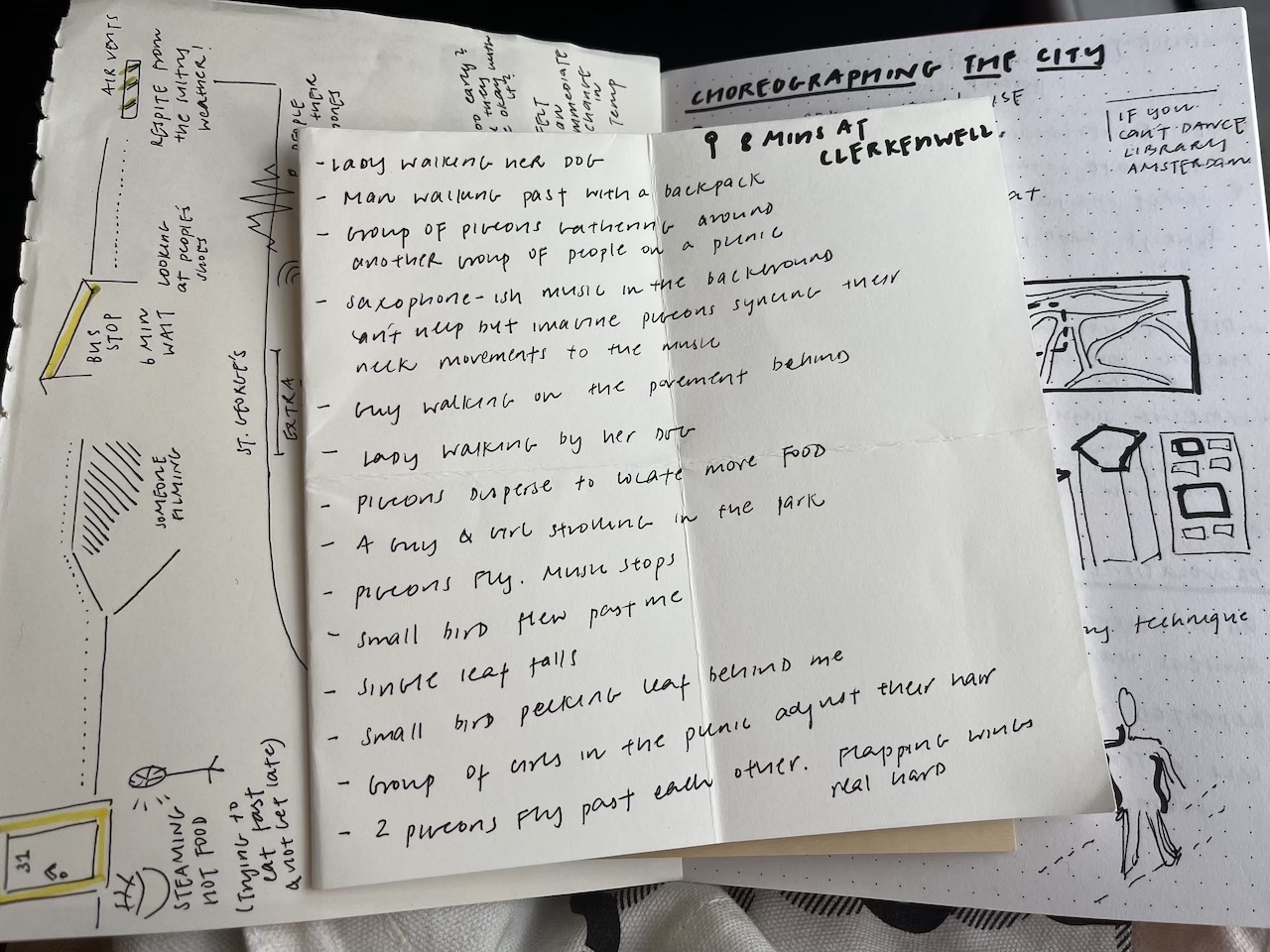

These walks, guided by artist Alisa Oleva, introduced me to the concept of deep hanging out — an intentional act of spending long durations of time in a place and observing deeply to exhaust all sensory observations of our surroundings.

Placemaking Poetics
17.06.23 | Leigh On Sea | Organised by Fieldnotes

Led by Fieldnotes, an artist-run publishing project (Fieldnotes, no date), this walking workshop involved visiting a nature reserve and focusing on the themes of walking and delving into place-based writing using approaches like concrete poetry, psychogeography, and mark- making. This experience opened up new avenues to explore in my research, particularly in relation to observing the sonic qualities of a place through slow, long-durational listening (Oliveros, 2022) and prompt-based writing.
Chatham Smell Walk
22.03.23 & 08.06.23 | Chatham | Undertaken along with Dr. Kate McLean



I had the privilege of accompanying Dr. Kate McLean on her smell walks, intended to learn more about the issue of gentrification in Chatham, Kent. During our journey, I picked up tidbits of information on registering and recording smells, the need to involve locals for understanding the lived experience of a place, and the nuances of creating a study revolving around the senses
Registering smells
I learned strategies for registering new smells through the act of repeated sniffing, pausing and varying between short and long sniffs. Prof. McLean elaborated on factors like prior context, temperature that affect our ability to register a smell and the differences between indoor and outdoor smells.
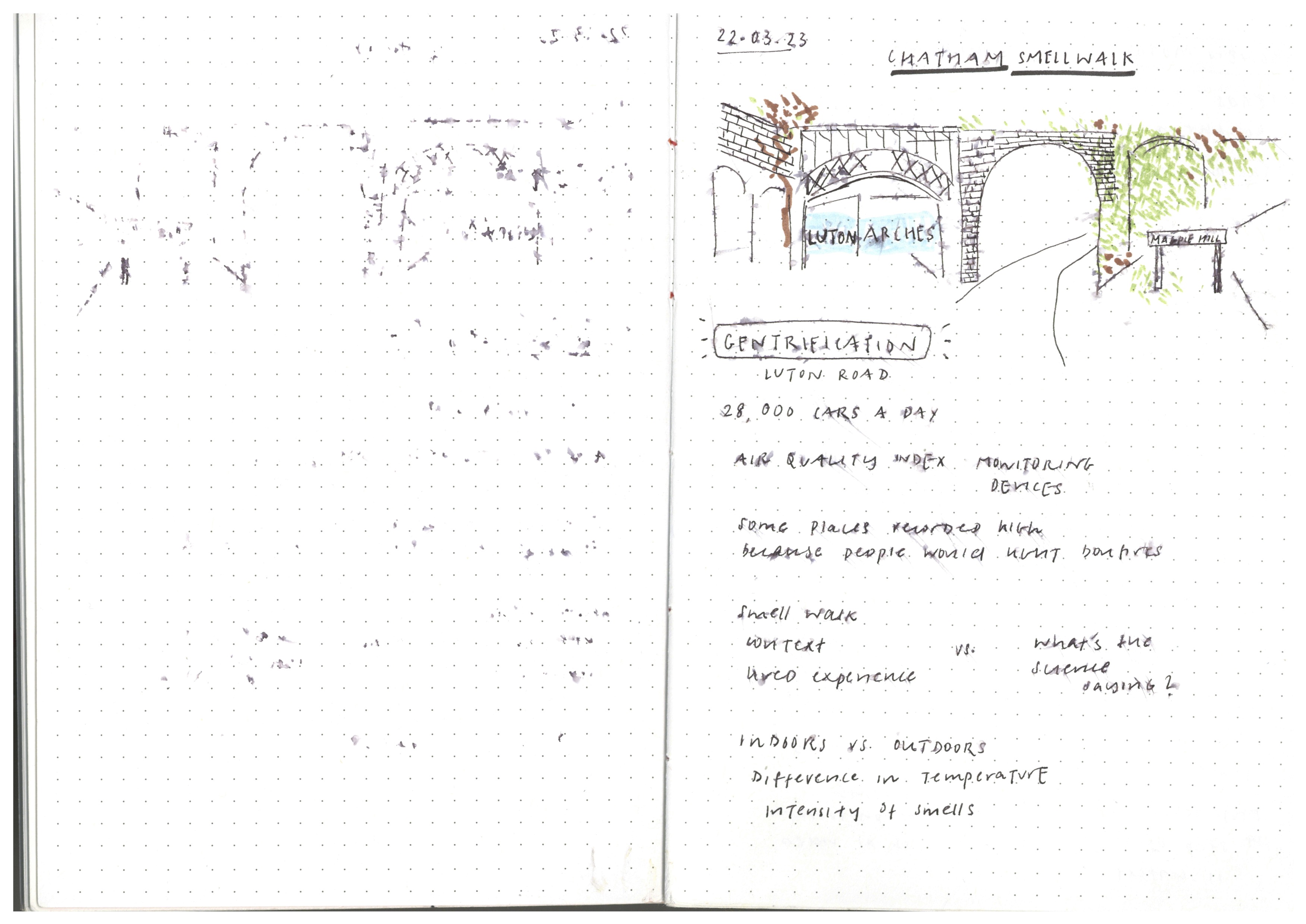

Recording smells
Another key point gathered during the walk was the value in recording senses and their associations immediately during the experience rather than based on recall at a later point. More nuanced associations and context tend to be recorded when participants visualise their impressions as they experience it.


Lived experience
I also learned about the need for involving locals, particularly when a study is intended to understand the lived experience of a place. Deep context is required to understand the transient nature of a city through the changes in its sensory experience.
Tin can Headphone Walk
06.05.23 | Whitgift Shopping Centre | Organised by Katherine Smith

I participated in an open-ended sensory walk organised by Katherine Smith in Croydon (Tin Can Headphone Walk, 6/5/23, Whitgift Shopping Centre). Wearing tin cans around our ears to amplify auditory stimuli, the participants walked through a shopping center, noting our feelings and perceptions of the space. Reflecting back on the experiences shared by the group at the end of the walk, particularly those shared by neurodiverse participants, made me realise the extent to which our common sensory experiences can be interpreted in varied and subjective ways.

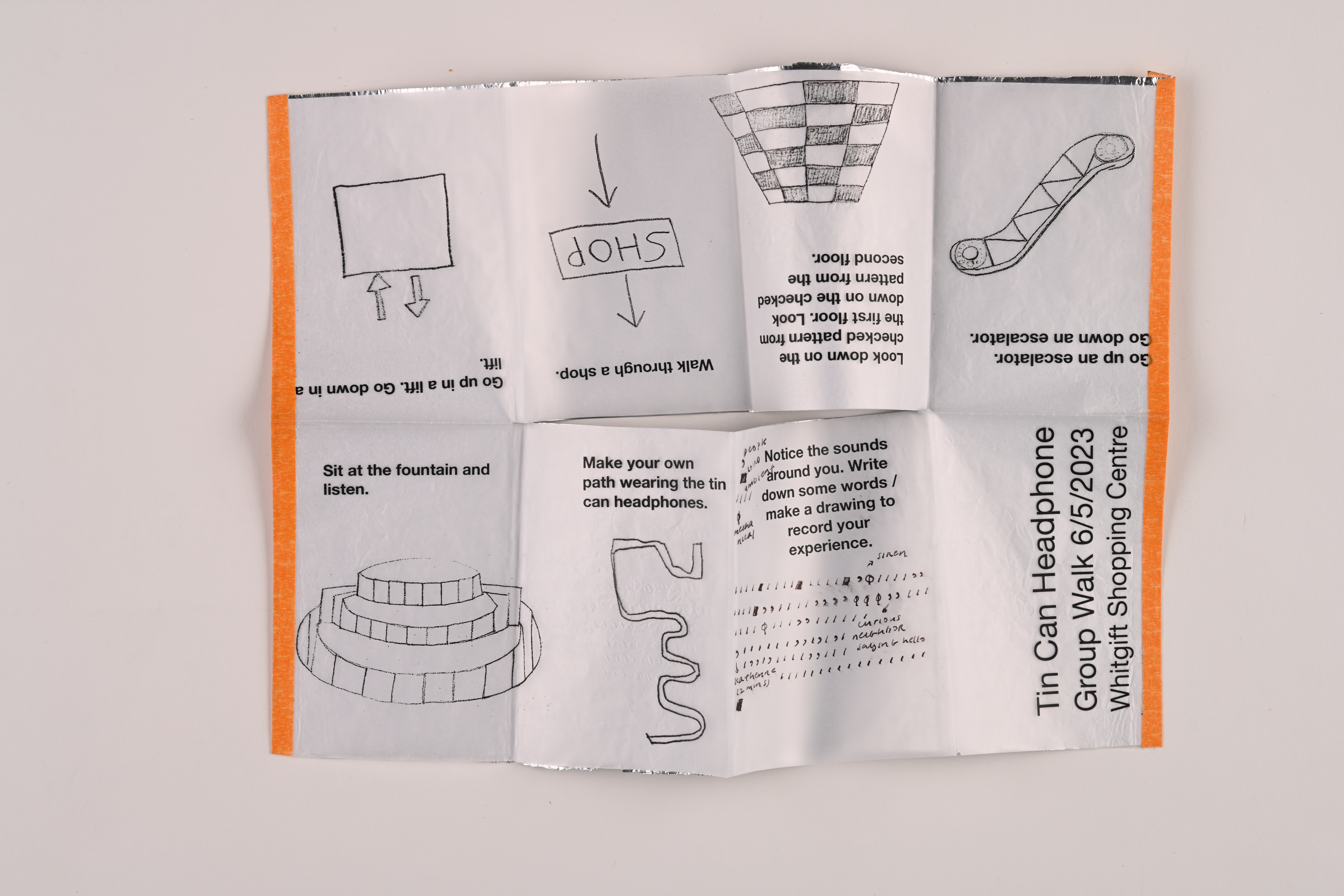

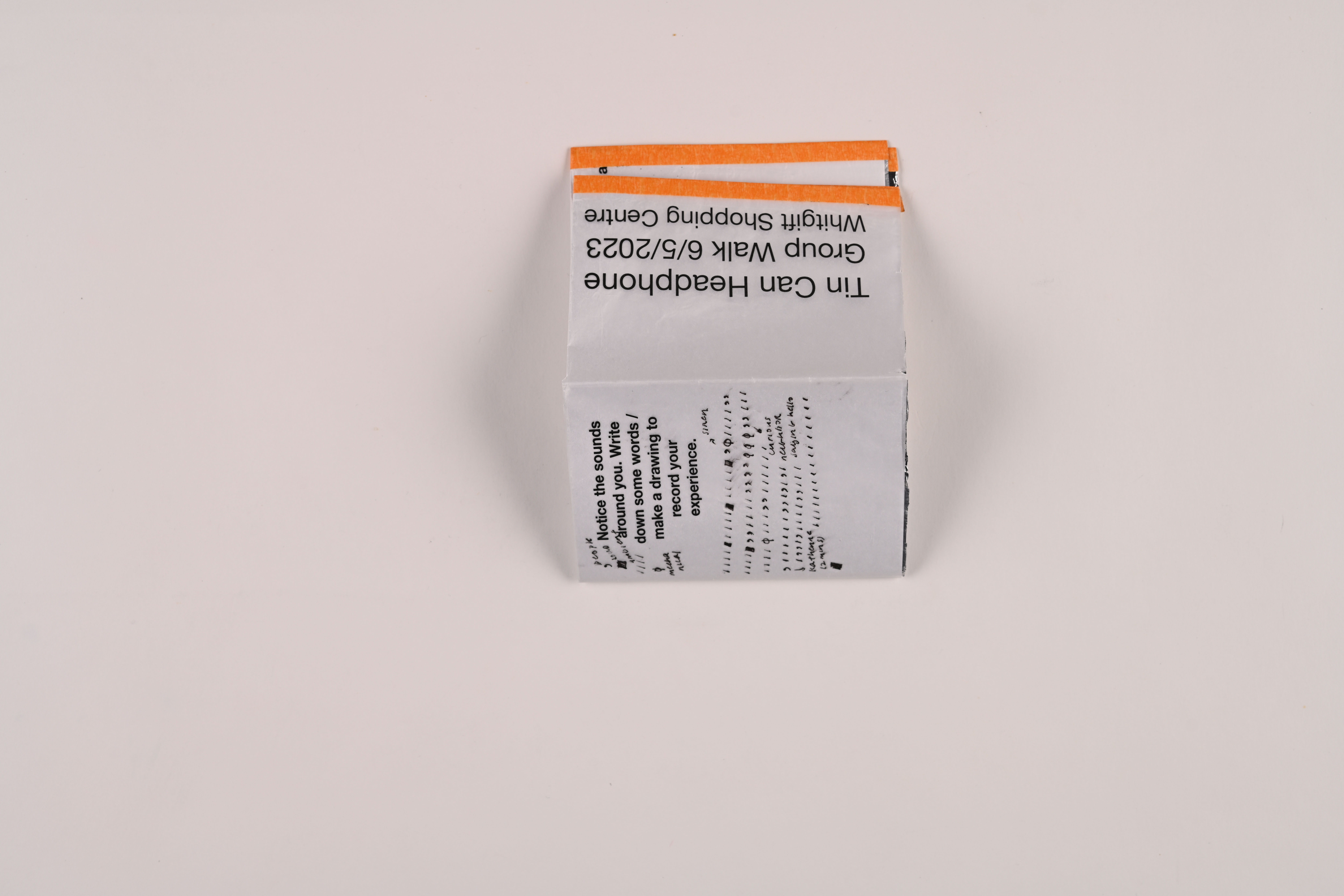
Sensory Data Walk
17.04.2023 | Bermondsey Spa
As an experiment, I undertook a personal sensory walk in Bermondsey Spa Gardens to better understand the complexities of detecting and recording new sensory experiences.
Registering sensory data
Not picking a particular focus in the beginning, I walked around the gardens trying to capture every sense, quickly getting overwhelmed by the sights and sounds around me. It became gruelling to observe the barrage of stimuli surrounding me, decide which ones I was to capture, and record them fast enough before the next stimuli hit me. Finally, using a recording app on my phone helped ease this pressure, as I could now filter out sounds later with ease.
The spatiality of sensory information became obvious. Most sounds were easily classifiable as distant or near. Smells and touches were close at hand and felt intimate. Smells I could easily detect around me were either the perfumes of people nearby or the smells of food at a distance.
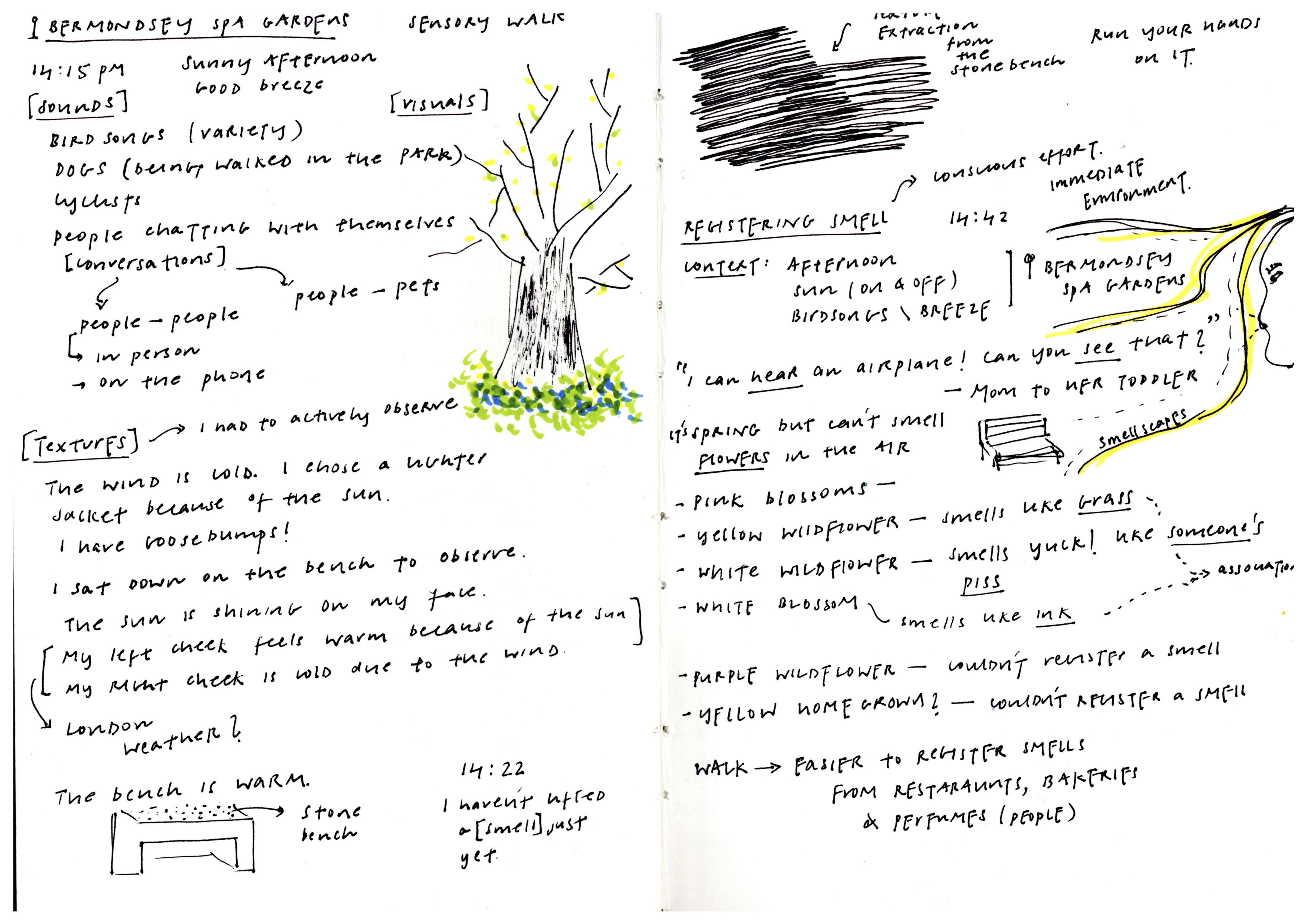
To improve my ability to focus on a particular aspect of the experience, in the next phase I chose a subject to collect sensory information about: flowers. The abundance of spring flowers around made for plenty of data. I smelled the flowers, noted their colors, and felt their texture. An interesting set of thoughts came out of this experience. Being unfamiliar with the flora of the city, I struggled to name unfamiliar smells and fell back on comparing them to analogous smells from my past. Some felt unfamiliar enough to fail any comparison. Faint smells required multiple sniffs with pauses to properly register them.
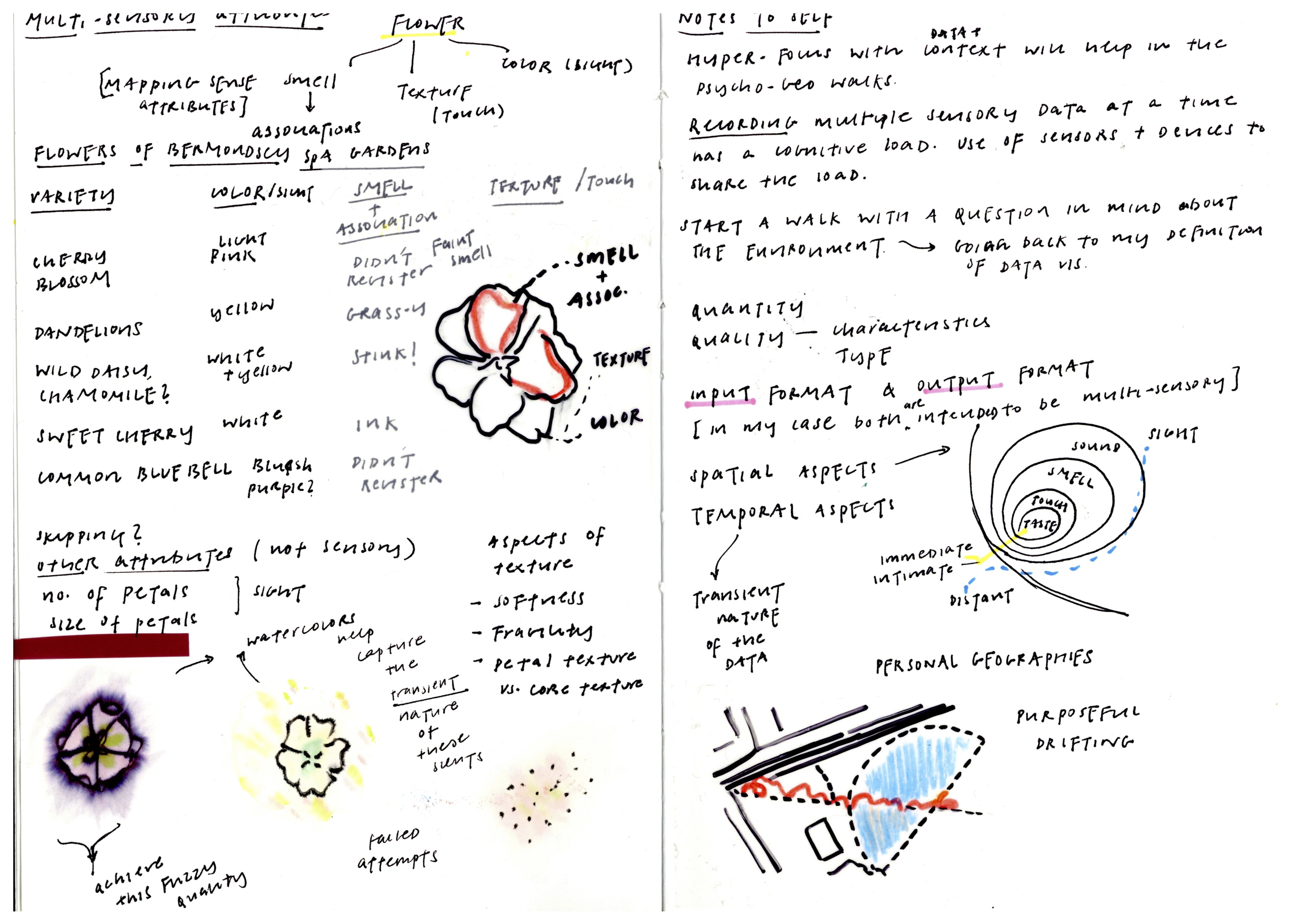

Acoustic Commons
25.03.23 | Organised by Soundcamp

Keeping myself open to input from outside design circles has been another source of inspiration and serendipity. I participated in a workshop hosted by Soundcamp, an artist’s collective which investigates long- duration listening in the context of the environment and ecology (Soundcamp, no date).
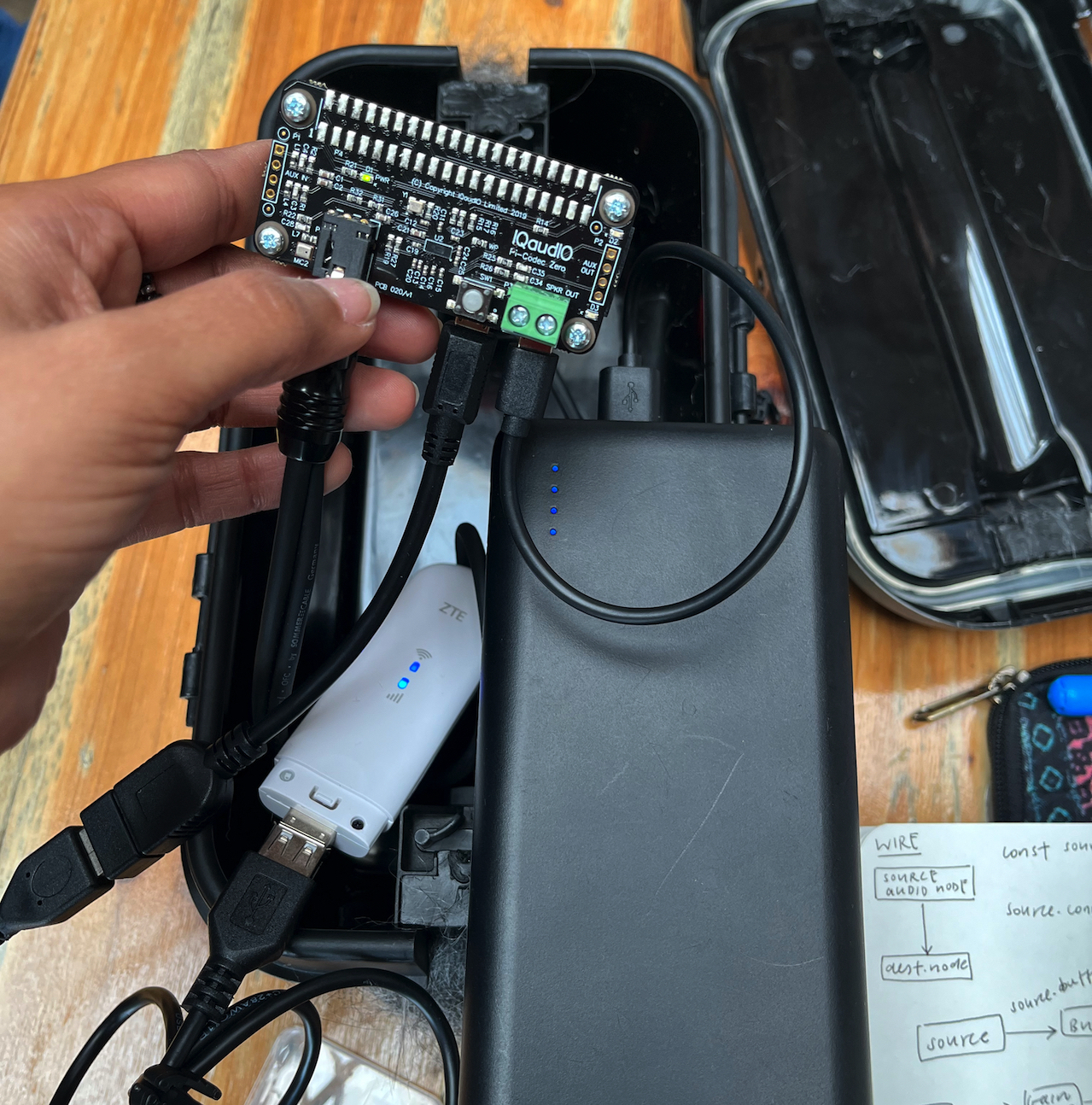
We assembled a streambox built with a Raspberry Pi, an audio sensor, and a microphone that captures and streams sounds in real-time over the radio. I used the device on a short data walk around the neighbourhood to capture ecological sounds, noticing how sensors like these can reduce the overwhelm and anxiety of capturing information during sensory walks.